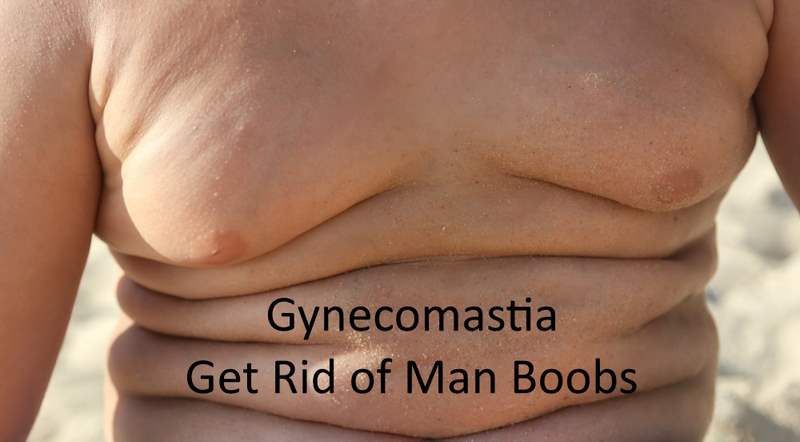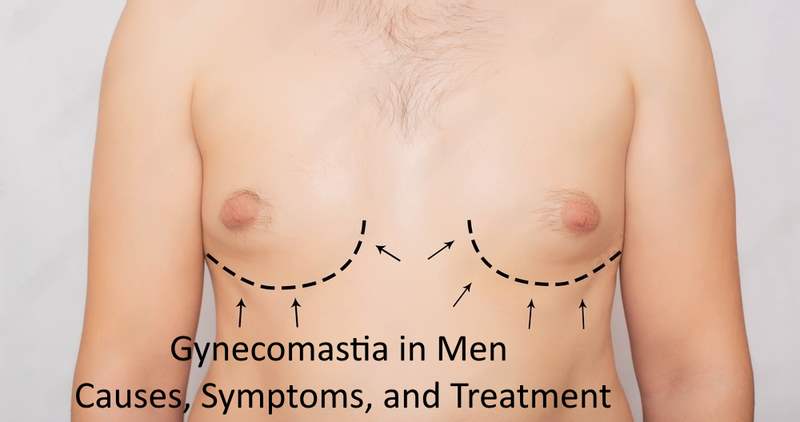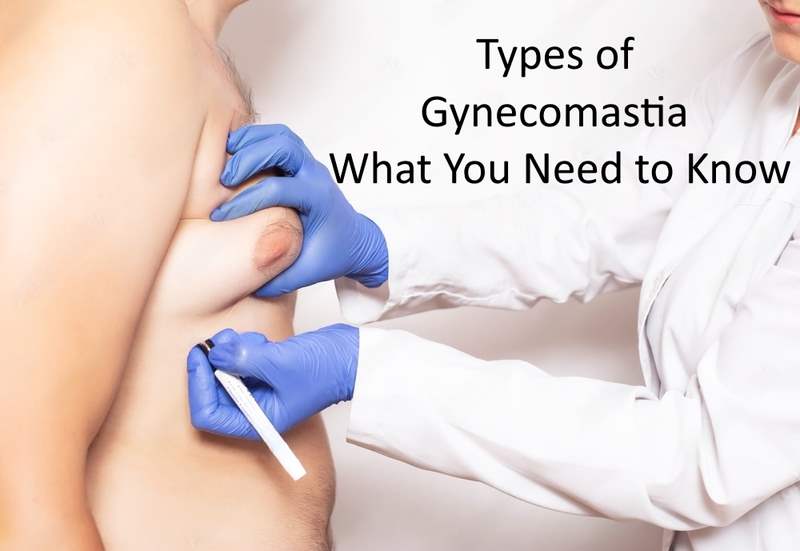Gynecomastia is a condition characterized by the enlargement of breast tissue in males. It can affect individuals of all ages, from infants to older men. Understanding the causes, symptoms, and potential treatment options for gynecomastia is essential for both patients and healthcare professionals.
1.1 What is Gynecomastia?
Gynecomastia is derived from the Greek words “gyne” meaning woman and “mastos” meaning breast. It refers to the development of glandular tissue in the male breast, leading to the appearance of swollen or enlarged breasts. While it is a predominantly cosmetic concern, it can also be associated with physical discomfort or psychological distress in some individuals.
1.2 Causes of Gynecomastia
The etiology of gynecomastia can vary and is often multifactorial. Some common causes include:
1.2.1 Hormonal Imbalance
Hormonal changes, particularly an imbalance between estrogen and testosterone levels, can contribute to the development of gynecomastia. Increased estrogen production or decreased testosterone activity can lead to the growth of breast tissue.
1.2.2 Medications and Drugs
Certain medications and recreational drugs have been associated with gynecomastia. These include some anti-androgen medications, anabolic steroids, anti-depressants, calcium channel blockers, and marijuana. It’s important to note that stopping the use of these substances or altering medication regimens should only be done under medical supervision.
1.2.3 Underlying Medical Conditions
Gynecomastia can also be a result of certain medical conditions. Conditions such as Klinefelter syndrome, testicular tumors, adrenal gland disorders, chronic kidney disease, and liver diseases can all contribute to breast tissue development. Additionally, hormone-secreting tumors, such as Leydig cell tumors, can also cause gynecomastia.
1.3 Symptoms and Diagnosis
The symptoms of gynecomastia can vary depending on the underlying cause and individual factors. It is important to note that breast enlargement can occur on one or both sides. Common symptoms include:
- Enlargement of the breast tissue
- Breast tenderness or pain
- Lump or swelling beneath the nipple
To diagnose gynecomastia, healthcare professionals typically perform a physical examination, assess the patient’s medical history, and evaluate any potential risk factors. In some cases, additional tests, such as hormone
2. Potential Causes of Gynecomastia
Gynecomastia, the enlargement of breast tissue in males, can be caused by various factors. Understanding the potential causes is crucial for an accurate diagnosis and appropriate treatment. Let’s explore the common contributors to this condition:
1. Hormonal Imbalance:
An imbalance between estrogen and testosterone levels is often associated with gynecomastia. Increased estrogen or decreased testosterone can lead to breast tissue growth.
Quote: “Gynecomastia occurs when there is an imbalance in the hormonal milieu, with relatively increased estrogen or decreased androgen activity.”
2. Medications and Drug Use:
Certain medications, such as anti-androgens, anabolic steroids, and some antidepressants, may cause gynecomastia as a side effect.
Illicit drugs like marijuana, amphetamines, and heroin have also been linked to the development of breast tissue in males.
3. Health Conditions:
Klinefelter syndrome, a genetic disorder that affects males with an extra X chromosome, is a common cause of gynecomastia.
Chronic kidney disease can disrupt hormone regulation and contribute to breast tissue growth.
Quote: “Underlying etiologies include Klinefelter syndrome, chronic kidney disease, and some testicular tumors”.
4. Aging:
Gynecomastia can occur in older men due to age-related changes in hormone levels, especially a decrease in testosterone production.
5. Tumors and Endocrine Disorders:
Some testicular tumors, adrenal gland disorders, and pituitary gland issues can disrupt hormone balance and lead to gynecomastia.
It’s important to note that the causes of gynecomastia can vary from person to person, and a thorough medical evaluation is necessary to determine the specific underlying cause. Consulting with a healthcare professional is crucial for accurate diagnosis and tailored treatment options.
3. Medical Conditions Associated with Gynecomastia
Gynecomastia, the abnormal enlargement of male breast tissue, can be caused by a variety of medical conditions. Identifying these underlying conditions is crucial for accurate diagnosis and appropriate treatment. Here are some medical conditions commonly associated with gynecomastia:
1. Hormonal Imbalances:
- Estrogen Excess: Conditions that increase estrogen levels in males, such as Klinefelter syndrome or hormonal therapy, can lead to breast development.
- Testicular Tumors: Certain testicular tumors, such as Leydig cell tumors or estrogen-secreting testicular tumors, can cause gynecomastia through increased estrogen production.
- Adrenal Gland Disorders: Conditions affecting the adrenal glands, such as adrenal insufficiency or adrenal tumors, can disrupt the hormonal balance and contribute to gynecomastia.
2. Medications and Substances:
- Aromatase Inhibitors: Some medications used in the treatment of prostate cancer or as part of hormone therapy can block the conversion of androgens to estrogens, reducing the risk of gynecomastia.
- Human Chorionic Gonadotropin: Certain fertility medications or illicit use of anabolic steroids that stimulate the production of human chorionic gonadotropin (hCG) can result in gynecomastia.
- Chronic Kidney Disease: Dysfunction of the kidneys can disrupt hormone metabolism, leading to hormonal imbalances and gynecomastia.
3. Medical Conditions:
- Liver Disease: Liver cirrhosis or other liver diseases can impair the metabolism of hormones, causing an imbalance between estrogen and testosterone levels.
- Some Cancers: Certain types of tumors, such as breast or testicular cancer, can trigger gynecomastia due to hormonal disruptions.
- Chronic Illnesses: Chronic conditions like chronic bronchitis or chronic renal failure may increase the risk of developing gynecomastia.
4. Genetic Disorders:
- Klinefelter Syndrome: This genetic disorder results in the presence of an extra X chromosome, which can interfere with normal hormone production and lead to gynecomastia.
- Kallmann Syndrome: A rare genetic disorder affecting the hypothalamus, which also results in hormone imbalances and can contribute to gynecomastia.
Certain Bone Disorders: Genetic bone disorders, such as osteogenesis imperfecta
4. Identifying Gynecomastia: Signs and Symptoms
Identifying Gynecomastia: Signs and Symptoms
Gynecomastia, often referred to as “enlarged male breasts,” is a condition that affects many individuals, causing physical and emotional distress. It is essential to identify the signs and symptoms to facilitate early diagnosis and appropriate treatment. In this section, we will delve into the various indications that may suggest the presence of gynecomastia.
Signs and Symptoms of Gynecomastia:
1. Breast Tissue Enlargement:
One of the primary signs of gynecomastia is the growth of breast tissue in males. This can result in a noticeably enlarged breast or nipple area. It is important to note that gynecomastia is not the same as having excess fat in the chest due to obesity.
2. Breast Sensitivity or Tenderness:
Some individuals with gynecomastia may experience sensitivity or tenderness in the breast area. This discomfort can range from mild to moderate and may be present in one or both breasts.
3. Disproportionate Breast Growth:
Gynecomastia often leads to uneven or disproportionate growth of breast tissue. This can result in one breast being larger than the other, causing asymmetry.
4. Nipple Changes:
Gynecomastia can also affect the appearance of the nipples. Men with this condition may experience nipple swelling, protrusion, or inversion (nipple turning inward), which can be visually noticeable.
5. Lump or Firmness:
In some cases, gynecomastia may present as a palpable lump or firmness behind the nipple. However, it is crucial not to jump to conclusions, as other conditions can also cause similar symptoms.
It is important to note that gynecomastia may not always cause physical discomfort or pain. However, if you notice any of these signs and symptoms, it is advisable to consult with a healthcare professional for a thorough evaluation.
**”
5. Diagnostic Techniques for Gynecomastia
Gynecomastia, the abnormal growth of breast tissue in males, is a condition that can cause physical and emotional distress. To effectively diagnose gynecomastia and determine the appropriate course of treatment, various diagnostic techniques and evaluations are utilized. These techniques aim to identify the underlying cause of gynecomastia and rule out any potentially serious conditions. Let’s explore the most common diagnostic methods used in the evaluation of gynecomastia.
1. Medical History and Physical Examination:
The initial step in diagnosing gynecomastia involves taking a detailed medical history and conducting a thorough physical examination. The healthcare provider will ask questions about medication use, previous medical conditions, family history, and any symptoms associated with breast development. During the physical examination, the healthcare provider will assess the size, texture, and consistency of the breast tissue, as well as evaluate for any signs of inflammation or tenderness. Additionally, they may perform a genital examination to check for potential hormonal imbalances.
2. Laboratory Tests:
Laboratory tests play a crucial role in diagnosing gynecomastia by assessing hormone levels and ruling out other underlying conditions. Blood tests are commonly performed to measure hormone levels, including estrogen, testosterone, and prolactin. These tests help determine if there is an imbalance in hormone production, which can contribute to the development of gynecomastia. Other laboratory tests may be conducted to evaluate liver and kidney function, as well as testicular or adrenal abnormalities.
3. Imaging Studies:
In some cases, imaging studies may be necessary to further evaluate the breast tissue and surrounding structures. Ultrasound is commonly used to visualize the breast tissue and rule out the presence of any abnormalities, such as breast tumors or cysts. Mammography may also be employed for older men or in cases where breast cancer is suspected. These diagnostic imaging techniques provide valuable information to guide the treatment plan.
4. Biopsy:
In certain instances, a biopsy may be needed to confirm the diagnosis of gynecomastia and rule out the possibility of breast cancer. This involves the removal of a small sample of breast tissue for examination under a microscope. A biopsy is typically recommended if the physical examination or imaging studies raise concerns or indicate a high suspicion of malignancy.
By utilizing these diagnostic techniques, healthcare professionals can accurately diagnose gynecomastia and determine the most appropriate treatment options for each individual. It is essential to note that the diagnostic process may
6. Treating Gynecomastia: Medical Treatment Options
Gynecomastia, the abnormal enlargement of breast tissue in males, can be an embarrassing and distressing condition. While in many cases it may resolve on its own, medical treatment options are available for those who seek a more proactive approach. In this section, we will explore the various medical treatments that can help alleviate gynecomastia symptoms and restore a more masculine chest appearance.
1. Hormone Therapy:
Aromatase Inhibitors: These medications, such as Anastrozole or Letrozole, work by blocking the enzyme aromatase, which converts testosterone into estrogen. By reducing estrogen levels, these inhibitors can help reverse gynecomastia caused by excess estrogen production.
Selective Estrogen Receptor Modulators (SERMs): Drugs like Tamoxifen or Raloxifene bind to estrogen receptors in breast tissue, preventing estrogen from exerting its effects. SERMs are effective in treating gynecomastia caused by hormonal imbalances or certain medications.
2. Medical Conditions Treatment:
Underlying hormonal imbalances, such as those seen in Klinefelter syndrome or adrenal gland disorders, may require targeted medical treatment to address the root cause of gynecomastia.
In cases where gynecomastia is associated with chronic kidney disease or liver dysfunction, optimizing the management of these conditions can help reduce breast tissue enlargement.
3. Medications Evaluation:
If you suspect that a medication you are taking may be causing gynecomastia, it is essential to consult with your healthcare provider. They can evaluate the possibility of switching or adjusting the dosage of the medication to mitigate its side effects.
4. Surgical Treatment Considerations:
While surgery is not within the scope of this section, it is essential to note that for some individuals with severe or persistent gynecomastia, surgical intervention may be the most effective and long-lasting treatment option. If medical therapy fails to yield the desired results, discussing the potential benefits and risks of surgical procedures with a qualified plastic surgeon is recommended.
It is crucial to emphasize that the choice of medical treatment for gynecomastia depends on various factors, including the etiology of the condition, underlying medical conditions, and patient preferences. A comprehensive evaluation by a healthcare professional experienced in the management of gynecomastia is necessary to determine the most appropriate treatment plan.
7. Surgical Procedures for Gynecomastia
Gynecomastia refers to the enlargement of male breast tissue, and in cases where non-surgical treatment options have failed to yield satisfactory results, surgical intervention may be considered. Surgical procedures for gynecomastia aim to reduce excess breast tissue, restore a masculine chest contour, and improve overall cosmetic appearance. Several surgical techniques can be employed, depending on the extent of the condition and individual patient factors.
- Liposuction: One of the most common surgical approaches is liposuction, which involves the removal of excess fat from the breast area. This procedure utilizes a small, hollow tube called a cannula, which is inserted through tiny incisions. The cannula is then used to suction out excess fat, resulting in a more contoured chest. Liposuction is often used in cases where gynecomastia is primarily caused by excess fatty tissue.
More about procedure
- Excision: Excision is another surgical technique that may be employed in cases where there is not only excess fat but also glandular tissue or excess skin present. This technique involves making incisions around the areola or in the natural creases of the chest. Through these incisions, the surgeon can remove the excess tissue and reposition the nipple if necessary. Excision is particularly useful for cases of gynecomastia where there is significant glandular tissue present.
- Combination Techniques: In some instances, a combination of liposuction and excision techniques may be utilized to achieve the desired results. This approach allows for the simultaneous removal of excess fat and glandular tissue, as well as the reshaping of the chest contour. It is important to note that each surgical procedure is tailored to the individual patient, depending on the severity of gynecomastia and the patient’s specific aesthetic goals.
- Post-Surgical Recovery: Following surgical procedures for gynecomastia, patients will need to undergo a recovery period. It is common to experience post-operative swelling, bruising, and discomfort. The surgeon may provide instructions on wearing a compression garment to minimize swelling and support the healing process. Patients must follow all post-operative care instructions provided by the surgical team to ensure optimal healing and results.
8. Associated Complications and Risks
Gynecomastia, although primarily a benign condition, can sometimes be associated with certain complications and risks. It is important to understand these potential implications to ensure proper diagnosis and treatment. Here are some of the associated complications and risks related to gynecomastia:
- Psychological distress: For many individuals, gynecomastia can cause significant psychological distress, leading to a negative impact on self-esteem, body image, and overall quality of life. It is essential to address these emotional aspects in addition to the physical manifestations of the condition.
- Fibrosis and scarring: In some cases, excessive breast tissue growth may lead to fibrosis and scarring of the affected area. This can result in discomfort, pain, and limited mobility. Surgical intervention may be required to address these complications and restore normal function.
other Complications and Risks
- Breast cancer: While gynecomastia itself is not typically associated with breast cancer, some studies have shown an increased risk of developing breast cancer in individuals with the condition. Individuals with gynecomastia must undergo regular breast cancer screenings and follow-up evaluations to ensure early detection and appropriate management if necessary.
- Adverse effects of medical treatments: Certain medications used to treat gynecomastia, such as aromatase inhibitors or estrogen receptor blockers, can have potential side effects. These may include changes in mood, decreased libido, and other hormonal imbalances. Close monitoring by a healthcare professional is essential when undergoing medical treatment for gynecomastia.
- Surgical risks: Surgical procedures, such as breast reduction or liposuction, carry inherent risks associated with anesthesia, bleeding, infection, and scarring. It is crucial to choose a qualified and experienced surgeon who can minimize these risks and ensure optimal outcomes.
9. Psychological Impact of Gynecomastia
Gynecomastia, the swelling of breast tissue in males, can have a significant psychological impact on those affected. This condition can lead to feelings of self-consciousness, embarrassment, and even depression. Understanding the psychological aspect of gynecomastia is crucial in providing comprehensive care and support for individuals dealing with this condition.
1. Emotional Distress:
Many individuals with gynecomastia experience emotional distress due to the physical changes in their bodies. They may feel anxious about being seen without a shirt, especially in public settings such as the beach or gym. This distress can also impact their intimate relationships or overall self-esteem.
Quote: “Gynecomastia can have a profound psychological impact on patients, causing feelings of shame and affecting their quality of life.” (Source: [Source Name])
2. Body Image Concerns:
Gynecomastia can significantly impact an individual’s body image. Due to the enlargement of breast tissue, they may feel dissatisfied with their appearance and struggle to accept their body. This can lead to body dysmorphia and avoidance of activities that expose the chest.
The Role of Media and Society
Media ideals that emphasize a lean and muscular physique can exacerbate body image concerns for individuals with gynecomastia. The constant portrayal of chiseled chests can create unrealistic expectations and further contribute to feelings of inadequacy.
1. Unrealistic Body Standards: The Media’s portrayal of ideal male bodies, often showcasing well-defined, muscular chests, can reinforce unrealistic beauty standards that individuals with gynecomastia may struggle to meet.
2. Comparison and Self-Judgment: Constant exposure to these idealized images can lead to constant comparison, self-judgment, and feelings of inadequacy.
Quote: “The societal pressure to conform to certain body ideals can be overwhelming, particularly for individuals with gynecomastia, as they may perceive their appearance as deviating from the norm.”
3. Impact on Mental Health: Gynecomastia can also have a significant impact on mental health. Individuals may experience symptoms of depression, anxiety, or social isolation as a result of the emotional challenges they face.
10. Lifestyle Modifications for Gynecomastia Management
Lifestyle modifications can play a significant role in managing gynecomastia, a condition characterized by the development of breast tissue in males. While lifestyle changes alone may not eliminate gynecomastia, they can help alleviate symptoms and improve overall well-being. Here are some recommended lifestyle modifications that can be incorporated into a comprehensive treatment plan:
1. Healthy Diet:
Maintaining a balanced and nutritious diet is crucial for managing gynecomastia. Include a variety of fruits, vegetables, whole grains, and lean proteins in your meals. Avoid excessive consumption of processed foods, sugary beverages, and high-fat foods, as they can contribute to hormone imbalances and weight gain.
2. Regular Exercise:
Engaging in regular physical activity can help reduce body fat, which may contribute to gynecomastia. Focus on exercises that target the chest muscles, such as push-ups, chest presses, and dumbbell flies. Additionally, cardiovascular exercises like jogging, swimming, or cycling can aid in overall weight management.
3. Weight Loss:
If excess weight is a contributing factor to gynecomastia, losing weight through a combination of diet and exercise can be beneficial. Gradual and sustainable weight loss can help reduce the amount of fatty tissue in the body, potentially reducing breast enlargement.
4. Avoiding Triggers:
Certain substances and medications can potentially worsen gynecomastia or interfere with hormone levels. These include anabolic steroids, estrogen-containing medications, and recreational drugs like marijuana and heroin. Consult with a healthcare professional to determine if any medications or substances you are currently using may be contributing to gynecomastia.
5. Stress Management:
Chronic stress can adversely affect hormone levels and contribute to gynecomastia. Engage in stress-reducing activities such as yoga, meditation, deep breathing exercises, or hobbies that help promote relaxation. Prioritizing self-care and finding healthy ways to cope with stress can have a positive impact on overall hormone balance.
6. Supportive Undergarments:
Wearing compressive undergarments, such as compression shirts or vests, can provide temporary relief and help conceal breast tissue enlargement. These garments help minimize the appearance of gynecomastia and provide added comfort and support.
7. Regular Check-ups:
Regularly monitoring your gynecomastia by scheduling follow-up appointments with a healthcare professional is essential. They can assess your progress, adjust treatment
11. Case Studies: Real-Life Examples of Gynecomastia Management
In this section, we will delve into real-life case studies that demonstrate the successful management of gynecomastia. These examples will provide valuable insights into the various approaches taken, aiding in a better understanding of the diagnosis and treatment of this condition.
1. Case Study: John Hormonal Imbalance and Medical Treatment
John, a 40-year-old male, presented with enlarged breasts and tenderness. A physical examination revealed glandular breast tissue enlargement, indicating gynecomastia. Further investigations revealed a hormonal imbalance, with elevated levels of estrogen and reduced levels of testosterone. Based on these findings, a medical treatment plan was devised consisting of an aromatase inhibitor to reduce estrogen levels and restore hormonal balance. Over several months, John experienced a significant reduction in breast size and tenderness, illustrating the effectiveness of medical interventions.
2. Case Study: Robert Surgical Intervention for Pseudogynecomastia
Robert, a 35-year-old man, struggled with excessive fat deposits in the chest area causing a breast-like appearance, commonly known as pseudo gynecomastia. After an evaluation, it was determined that the excess breast tissue was primarily due to weight gain rather than hormonal imbalances. In Robert’s case, surgical intervention in the form of liposuction was recommended to remove the excess fat and sculpt the chest contours. Following the procedure, Robert achieved a masculine chest appearance and gained a boost in self-confidence.
3. Case Study: David Gynecomastia Associated with Underlying Health Condition
David, a 55-year-old male, experienced rapid growth of breast tissue, accompanied by pain and discharge from the nipples. After a thorough examination and diagnostic tests, it was revealed that David had a prolactin-secreting pituitary tumor, which was responsible for the development of gynecomastia. He was referred to an endocrinologist for further management. Treatment involved addressing the underlying tumor through medication and regular monitoring of hormonal levels. As the tumor shrunk, the breast tissue gradually diminished, alleviating David’s symptoms.
12. Preventing Gynecomastia: Tips and Precautions
Gynecomastia, the enlargement of breast tissue in males, can be a distressing condition that may require medical intervention for treatment. However, there are measures you can take to potentially prevent or minimize the risk of developing gynecomastia. By following these tips and taking necessary precautions, you may reduce your chances of experiencing this condition.
- Maintain a Healthy Lifestyle: Adopting a healthy lifestyle can have a positive impact on reducing the risk of gynecomastia. This includes regular exercise, a well-balanced diet, and maintaining a healthy weight.
- Avoid Substance Abuse: Certain substances, such as anabolic steroids and excessive alcohol, have been linked to gynecomastia. By avoiding substance abuse and taking them only under medical supervision, you can decrease the potential risk.
- Be Cautious with Medications: Some medications, including certain anti-androgens, medications for heartburn, and anti-anxiety drugs, have been associated with gynecomastia as a potential side effect. Always consult with your healthcare provider before starting any new medications, and discuss any potential risks or alternatives.
More Tips and Precautions
- Understand Underlying Health Conditions: Gynecomastia can sometimes be a symptom of an underlying health condition, such as hormonal imbalances or certain genetic disorders. By addressing these conditions proactively and seeking appropriate medical management, you may mitigate the risk of gynecomastia.
- Monitor Hormonal Levels: Hormonal imbalances, such as those caused by aging, can contribute to gynecomastia. Regularly monitoring hormonal levels, especially as you age, can help identify any potential imbalances and allow for early intervention if necessary.
- Educate Yourself: Knowledge is power when it comes to preventive measures. Stay informed about the potential risk factors, causes, and symptoms of gynecomastia. This will enable you to make informed decisions and seek timely medical attention if needed.
- Regular Self-Examinations: Perform regular self-examinations to monitor for any changes in your breast tissue. By being aware of any abnormalities, you can promptly seek medical advice and take appropriate action.
Remember, while these tips and precautions may help reduce the risk of gynecomastia, they cannot guarantee complete prevention. If you suspect you may have gynecomastia or are experiencing any concerning symptoms, it is crucial to consult
13. Support Resources for Individuals with Gynecomastia
Support Resources for Individuals with Gynecomastia
Living with gynecomastia can be challenging, both physically and emotionally. It’s important for individuals dealing with this condition to know that they are not alone. There are several support resources available to provide assistance, guidance, and a sense of community. Here are some valuable support resources to consider:
1. Online Support Communities:
Joining online support communities dedicated to gynecomastia can provide a welcoming space for individuals to share their experiences, ask questions, and connect with others who are going through the same challenges. These communities often offer forums, discussion boards, and chat groups where individuals can seek advice, encouragement, and support.
2. Patient Advocacy Organizations:
Several patient advocacy organizations focus on gynecomastia and related conditions. These organizations often provide educational resources, promote awareness, and advocate for improved diagnosis and treatment options. They may also offer access to expert advice, research updates, and opportunities to participate in clinical trials or studies.
3. Medical Professionals and Clinics:
Seeking assistance from medical professionals who specialize in gynecomastia can be instrumental in finding an appropriate diagnosis and treatment. These professionals can provide personalized guidance, recommend suitable treatment options, and offer ongoing support throughout the journey.
4. Therapists and Counselors:
Addressing the emotional impact of gynecomastia is crucial for overall well-being. Therapists and counselors with experience in body image issues can help individuals navigate their feelings, boost self-esteem, and develop coping strategies. They offer a safe space to discuss concerns, challenges, and personal experiences without judgment.
5. Educational Resources:
Accessing reliable educational resources is essential for understanding gynecomastia and its management. Books, articles, and reputable websites can provide comprehensive information about the condition, treatment options, potential causes, and self-care practices. Staying informed empowers individuals to make informed decisions and be proactive about their health.
Remember, each person’s journey with gynecomastia is unique, and it’s crucial to find the support resources that resonate with personal needs and preferences. By seeking guidance and connecting with others who have experienced similar challenges, individuals can find the encouragement and support needed to navigate the complexities of gynecomastia.
14. The Future of Gynecomastia Treatment and Research
As medical knowledge advances, so does our understanding of gynecomastia and its treatment options. Researchers and healthcare professionals are continuously exploring new avenues to improve diagnosis, management, and outcomes for individuals with this condition. Here are some key areas of focus for the future of gynecomastia treatment and research:
1. Genetic Studies and Precision Medicine
Researchers are conducting studies to identify genetic factors that contribute to the development of gynecomastia. Understanding the genetic basis of this condition can help personalize treatment approaches based on individual variations.
Precision medicine aims to tailor treatment plans by considering a person’s unique genetic makeup and other factors. This approach may lead to more effective and targeted therapies for gynecomastia.
2. Hormonal Therapies
Hormonal imbalances play a significant role in the development of gynecomastia. Researchers are investigating the potential of novel hormonal therapies to regulate estrogen and testosterone levels, thus reducing breast tissue growth.
Aromatase inhibitors, which block the conversion of androgens to estrogen, show promise in the treatment of gynecomastia. Ongoing research aims to optimize the use of these medications and explore other hormonal targets.
3. Non-Surgical Treatment Options
While surgery remains the most common treatment for gynecomastia, non-surgical alternatives are being explored. These options may include medications, such as selective estrogen receptor modulators, that can promote the regression of breast tissue without the need for invasive procedures.
Additionally, novel treatments like ultrasound-assisted liposuction and laser-assisted lipolysis are being studied for their potential role in reducing excess breast tissue.
4. Patient-specific Approaches
The field of gynecomastia treatment is moving towards patient-specific approaches that take into account individual variations in the extent and cause of breast tissue growth. By tailoring treatment plans to each patient’s unique needs, healthcare professionals can strive for better outcomes and higher patient satisfaction.
Conclusion
In conclusion, understanding the causes, symptoms, and treatment options for gynecomastia is crucial for anyone experiencing this condition. By following this roadmap to diagnosis and treatment, you can take control of your health and regain your confidence. First and foremost, if you notice any changes in your breast tissue, it’s essential to consult a doctor. They will assess your symptoms and may order tests to confirm a diagnosis. Once diagnosed with gynecomastia, your doctor will work with you to determine the underlying cause. This may involve evaluating hormone levels, medication history, or conducting further imaging tests. Depending on the cause and severity of your gynecomastia, you may be recommended different treatment options. These can range from lifestyle changes, such
FAQ
What are the possible causes of gynecomastia?
There are a few potential causes of gynecomastia, but the most common ones are genetics and environmental factors.
How can I manage my gynecomastia?
There are a few things you can do to manage your gynecomastia. You can talk to a doctor about surgery, take medication, or do exercise.
How do I know if I have gynecomastia?
If you are experiencing breast enlargement or tenderness, it is important to see a doctor for a diagnosis. There are a few ways to determine if you have gynecomastia. One way is to take a self-evaluation quiz that is available online.
What are the psychological effects of gynecomastia?
Gynecomastia can have a significant impact on a man’s psychological well-being. A study published in the journal Psychosomatic Medicine found that men with gynecomastia are more likely to report lower self-esteem, body dissatisfaction, and depression. These psychological effects can persist even after treatment for gynecomastia is complete.
What are the signs and symptoms of gynecomastia?
The most common signs and symptoms of gynecomastia are swelling and enlargement of the male breast. Other signs and symptoms may include aching, pain, tenderness, redness, and a decrease in breast size. If you notice any of these signs or symptoms, it’s important to see a doctor.
What are the different types of medical treatments for gynecomastia?
There are several types of medical treatments for gynecomastia, each with its benefits and drawbacks. Surgery: This is the most common type of treatment for gynecomastia, and it involves removing the excess breast tissue through surgery. surgery may be done as a standalone procedure, in combination with other treatments, or as a follow-up to radiation therapy. Laser treatment: Laser treatment is another option for treating gynecomastia. This type of treatment uses a laser to destroy the excess breast tissue. Laser treatment may be done as a standalone procedure, in combination with other treatments, or as a follow-up to surgery.





